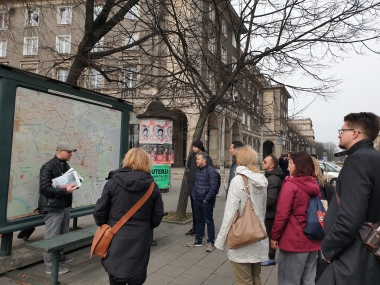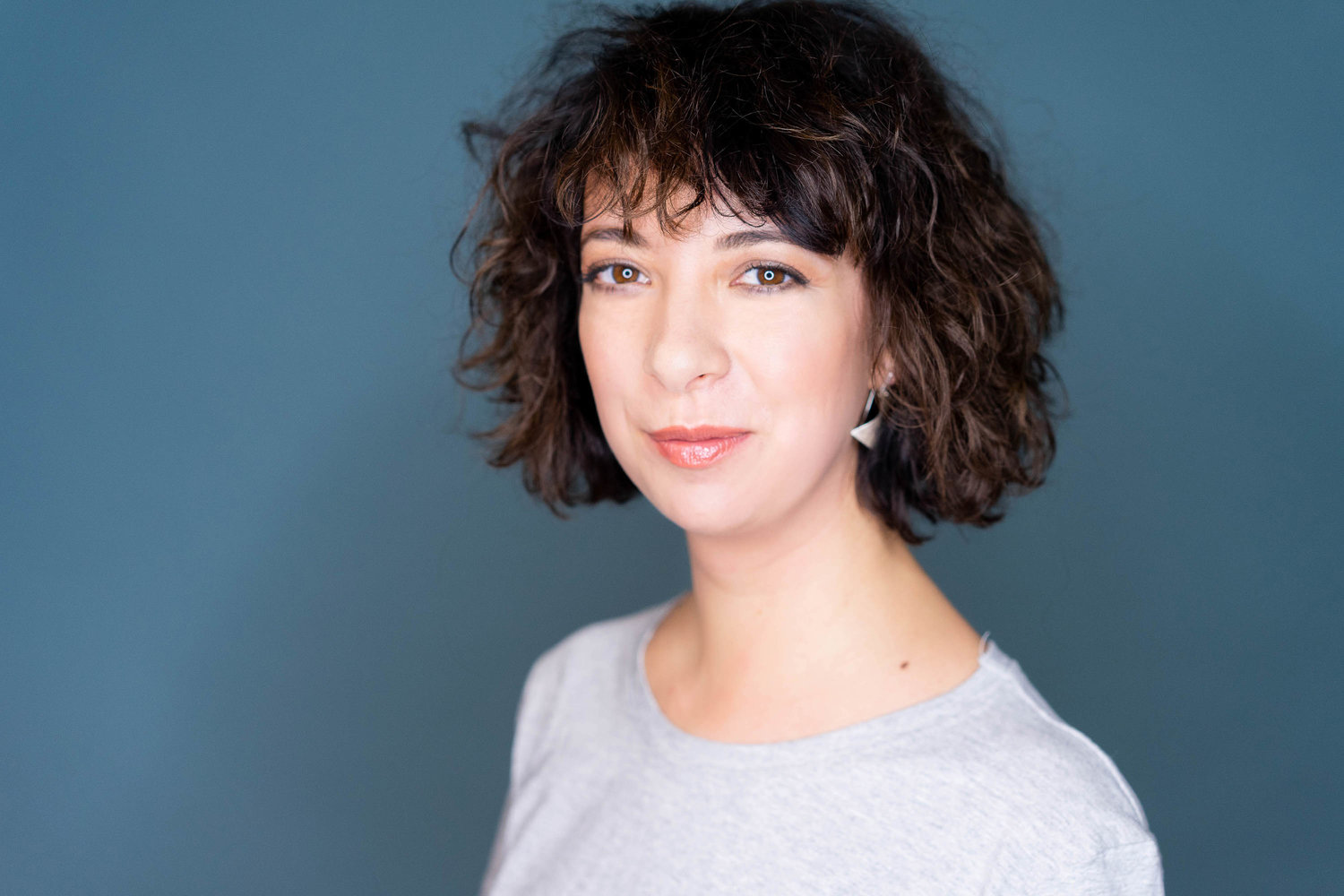The TFC living lab approach: the power of in-person transnational meetings for collective problem-solving
Edited on
04 September 2022As simple as it may seem, bringing people with diverse mind-sets strongly contributes to better and creative results, than just staying in a group of like-minded peers. This simplification represents the crux of the living lab approach. Defined as open innovation ecosystems in real-life environments, they focus on co-creating with public actors, private actors, academia and citizens solutions to emerging challenges. Living labs are different from the URBACT Local Group (ULG) practices in the sense that traditionally they focus on rapid prototyping solutions, while the ULG is tasked to co-produce a strategic plan. In this article we explore how the Tourism-friendly cities network adapted the living lab format for collective problem-solving around sustainable tourism issues.

# 1 TFC Living Lab: Genoa’s UNESCO Rolli palaces area and the gentrifying landscape of the historical centre
The challenge addressed was how to identify the forces shaping now the historical city center of Genoa. As the first living lab was taking place in the framework of the first transnational meeting of Tourism-friendly Cities network, the challenge was also serving in identifying the major themes that the network would address throughout its existence in capturing a better understanding of sustainable tourism.
Thus, the network members attending the transnational meeting were each asked to observe different aspects, while they were on a site visit taking them through the historical city center. These included spotting: (1) the “real enemy”/ the dark force acting against the success of the sustainable tourism plans, (2) the most unique aspect of Palazzi dei Rolli area story, (3) aspects of everyday life in Genoa that growing tourism is influencing , (4) innovative aspects, especially linked to social enterprises and collaborative forms of local economy connected to tourism and (5) main moments (from past to future) marking the transformations of the housing market of Palazzi dei Rolli area and report it in the form of a timeline. To do so, the site visit was organized as a walking tour starting from one of the most important tourism attractions – the UNESCO Rolli palaces- and heading through the side streets of Genoa’s historical city centre observing informal economy activities, stopping at one of the oldest local restaurants, meeting the waste collection team and exploring the challenges of recycling and serving efficiently the area, and visiting a few social enterprises with headquarters in the area.
This rich experience enabled all the network members to make a speedy leap into having a common understanding into the delicate balance between pro-tourism policies and preserving affordability and quality of life for residents. Later on, working in smaller groups, the TFC network members identified the sub themes that the network could focus on, which were included as research questions in the section 3 of the TFC baseline study.
# 2 TFC Living Lab: Braga’s Insula das Carvalheiras (Roman Site) and considering a new tourist attraction
The challenge proposed by the Braga URBACT Local Group (ULG) was related to how to diversify the existent tourism offer following sustainable tourism practices. The new tourism attraction to be considered was the newly rehabilitated Roman site called Insula das Carvalheiras. The archaeological site is significantly different from the existent tourism branding of Braga, mostly associated with religious tourism- the UNESCO Santuray of Bom Jesus do Monte and the Sé Cathedral. Thus, during the Braga transnational meeting, the TFC network visited the site paying particular attention to the following elements: connectivity and accessibility from Braga’s city center to the site, quality of interactions of the experience on-site and distinctive elements of the site. It is also happened that all the walking tour and site visit was done under torrential rain, and hence, the wather elements was also later analysed when understanding what should be impoved in the quality of tourism experience.
Following the site visit, the TFC network debrief in a plenary setting the main findings and gave the Braga ULG a series of recommendations to consider. The most significant aspect discussed was to carefully define the tourist profile, to actually include also local residents as visitors, as the Insula das Carvalheiras is actually not well known locally. The pedagogical potential of the site was highlighted, as the rehabilitation project now allows visitors to better understand building and living practices of the past and many interactive art additions can be considered for making the site visit more engaging. The educational angle would also allow to successfully communicate the site to a general audience, and not create confusion to the existing branding of Braga related to religious tourism. Last but not least, the Insula das Carvalheiras can be welcomed rain refuge and an excellent choice for a cultural activity in a bad weather day.
# 3 TFC Living Lab: Krakow’s Nowa Huta district and how to diversify the tourism offer
Before the COVID-19 pandemic, Krakow was confronted with over-tourism. However, the total number of visitors to the city in 2020 amounted to 7.95 million people compared to 14 million people in 2019, and the number of foreign tourists decreasing by 74.2%. This strong economic blow did not change the dynamic of gentrification of the city’s most famous sites: the historical city center and the Jewish District. In this context, the Krakow ULG proposed as the living lab theme to explore whether new tourism experiences such as the one based on the city’s recent communist history, were a viable strategy to consider for diversifying the tourism offer.
To do so, during the March 2022 transnational meeting, the TFC network members met with local entrepreneurs and several ULG members to better understand and experience the new services that now exist connected with the communist past of the city. The focus was on Nowa Huta, a socialist/communism district, which in Polish means ‘New Foundry’. Build in the 1950s, in the suburbs of Krakow, Nowa Huta was conceived as a separate city entirely, completely self-sufficient and intended to be superior to its neighbour. It now has a unique architecture and layout, a mix of Renaissance and communist influences, and several local cultural agents and entrepreneurs have started to co-create with local resident’s services to be offered to visitors. These include tours done in soviet cars of the neighbourhood, experience in a communist restaurant with a pre-fixed/ rationalized menu and visits to an atomic bomb shelter existing in one of the local schools. In the debriefing part, the TFC network members acknowledged the rich potential of this offer. A center aspect that was debated was the importance of the accuracy of information of local guides, with TFC members pointing out the high quality of information and framing they had experienced, that was balancing well the controversies that could have emerged from dealing with aspects of the recent communist past. It was concluded that Nowa Huta cultural tours are a viable and even much needed offer for any visitor to Krakow.
# 4 TFC online transnational exchange: mapping city practices that can act as replicable good practices
In addition to the planned living labs, there were several other formats that we employed during the three years’ journey of the TFC network in order to facilitate peer-to-peer learning. These formats were mostly adapted for online work, since most of our network’s work was conducted during the COVID-19 pandemic. Through a mix of short lectures, panel discussions, small group workshops, the TFC network was able to gain a better understanding on practices used by other cities and consider their replication in their own context. The most interesting practices later began also the focus of in-person study visits, to complement the technical knowledge acquired online with a more holistic assessment of how the practice actually “feel” and works in practice. Thus, the practices that were regarded as the most relevant for all the network practices were: (1) Caceres- how to follow cultural preservation guidelines when organising a farmer’s/ bio market n a UNESCO heritage site; (2) Druskininkai- how to work on making the destination accessible for mobility-impaired guests, understanding the specificities of spa tourism and options for internationalization; (3) Dubrovnik- using low-tech smart city solutions for avoiding overcrowding in Old Town, sustainable changes for decreasing negative impact of cruise tourism; (4) Dún Laoghaire- having an integrated approach for new cycle paths with new amenities to increase attractivity of the main street ; (5) Rovaniemi- understanding how nature is infrastructure and ways to preserve it; sustainability label for tourism operators; everyman’s rights and governance challenges; and (6) Venice- smart city solutions and tourism flows control.
All in all, the living labs that took place during transnational meetings were one of the valued peer-to-peer learning experiences, as all feedback from the TFC network suggests. In the future, we strongly advise other networks to make use of this set-up, both for problem-solving and consensus-building around complex urban challenges.
Article by Anamaria Vrabie, Lead Expert for the URBACT Tourism-friendly cities Network
 Submitted by Anamaria Vrabie on
Submitted by Anamaria Vrabie on
